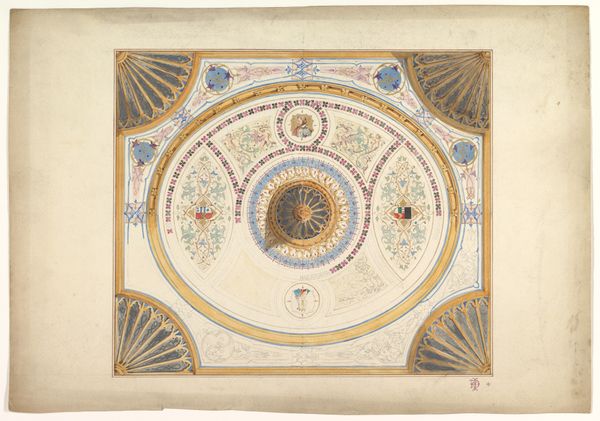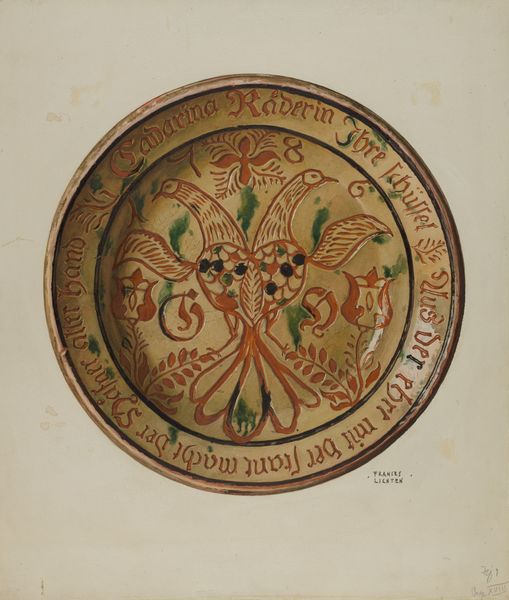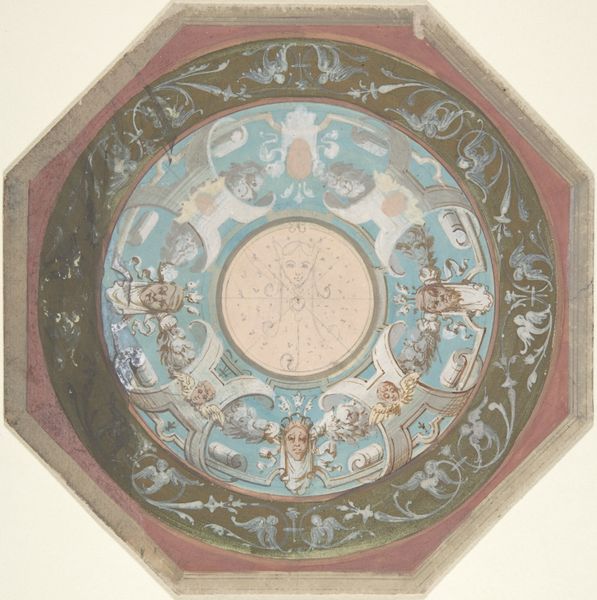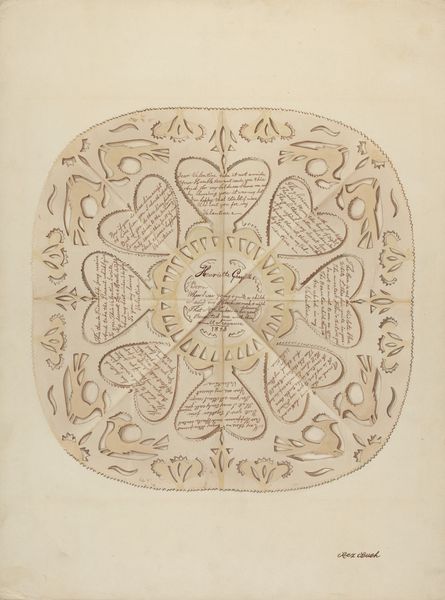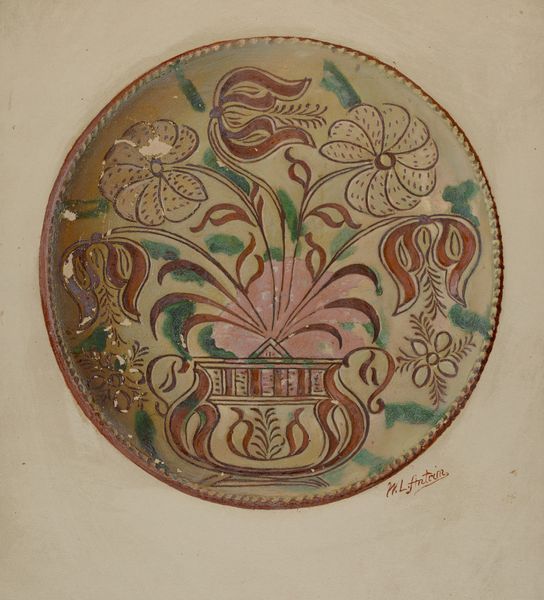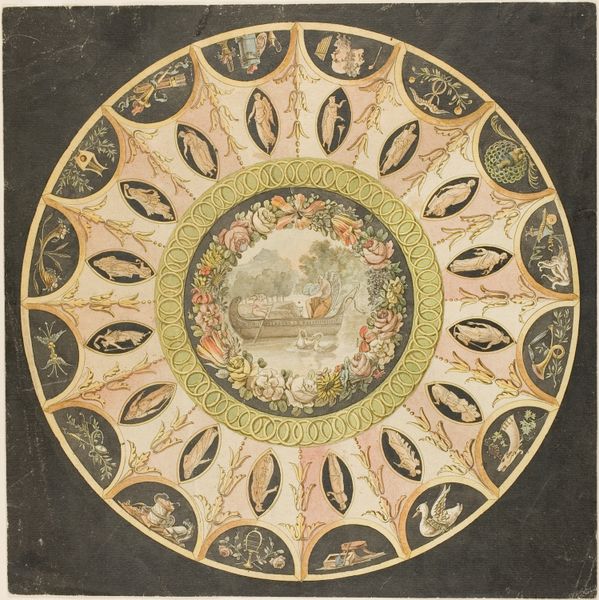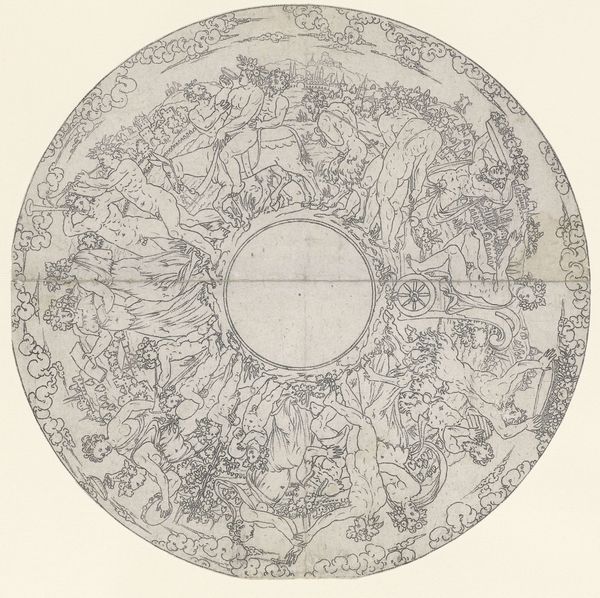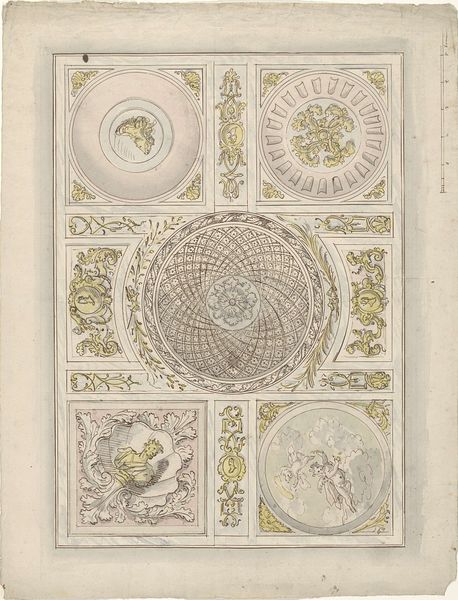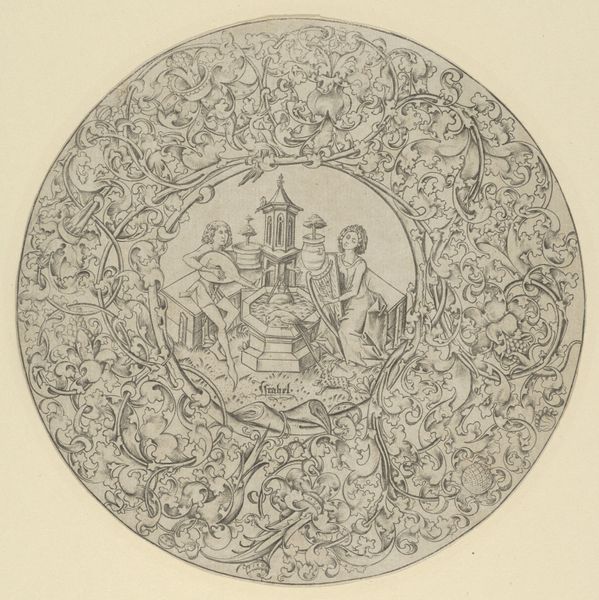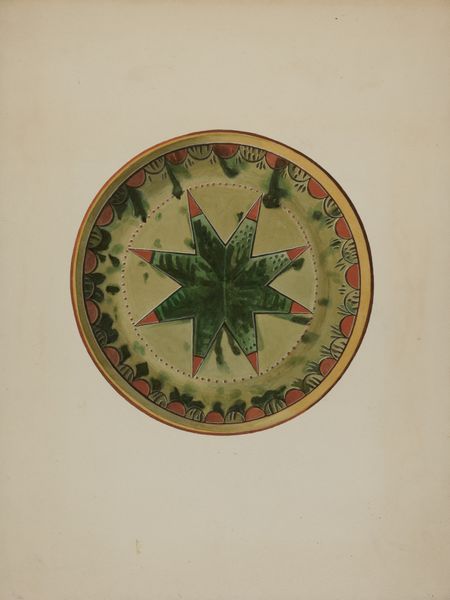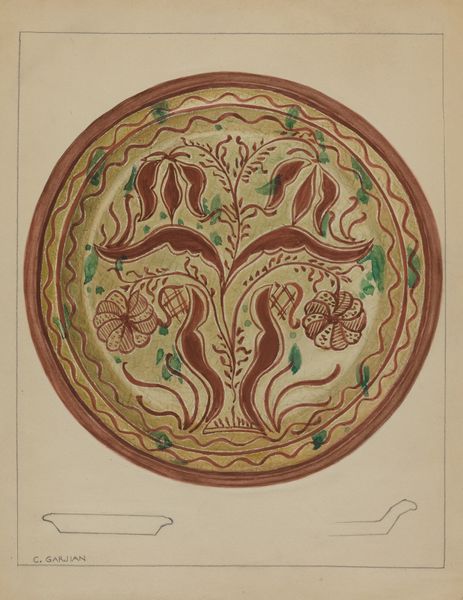
drawing, fibre-art, textile
#
drawing
#
fibre-art
#
textile
#
decorative-art
Dimensions: overall: 45.4 x 42.1 cm (17 7/8 x 16 9/16 in.)
Copyright: National Gallery of Art: CC0 1.0
Editor: This is Raymond Manupelli’s "Beaded Lamp Mat" from 1940, a drawing combined with fibre-art. It’s visually very intricate, almost dizzying with its floral patterns and delicate fringe. What stories do you think it tells? Curator: It's fascinating to consider this piece beyond its apparent functionality. This lamp mat, created during a period of significant social change, especially for women, speaks to the intersection of domesticity and artistry. How might traditional "women's work," like beadwork, become a site of quiet resistance or self-expression? Editor: Resistance? How so? It seems so... decorative. Curator: Precisely! What if that perceived "decorative" quality is a deliberate subversion of expectations? Consider the time: World War II was beginning. Women entered the workforce en masse and assumed roles previously held by men. This piece could be interpreted as a gentle reclaiming of space, imbuing domestic objects with artistic value, effectively saying, "My labor, even in the home, has worth.” What are your thoughts on the idea that craft can be a form of activism? Editor: I never really thought about craft that way before. So you’re saying it might challenge conventional views of gendered labor? Curator: Absolutely. And let's not forget the material itself: beads. Tiny, individual, yet collectively forming something beautiful and useful. Does this resonate with the feminist concept that individual women contribute to something far greater? Editor: That’s a great point. Looking at it now, the details definitely speak of intention and care. It makes you wonder what the artist was thinking, creating this piece. I might need to rethink the power of what I previously took to be merely "decorative". Curator: Exactly. It's about excavating those layers of meaning and understanding art's capacity to reflect and even subtly shape social narratives. Editor: I'm leaving this conversation considering a new perspective on women's artistic legacy and the socio-political undertones embedded within everyday objects. Curator: Indeed, may we continue to interrogate how objects can push us towards dialogue and resistance.
Comments
No comments
Be the first to comment and join the conversation on the ultimate creative platform.

